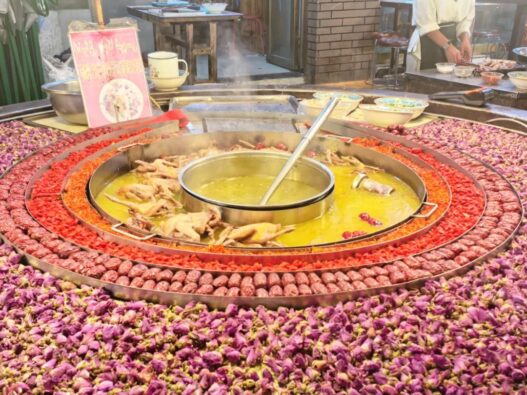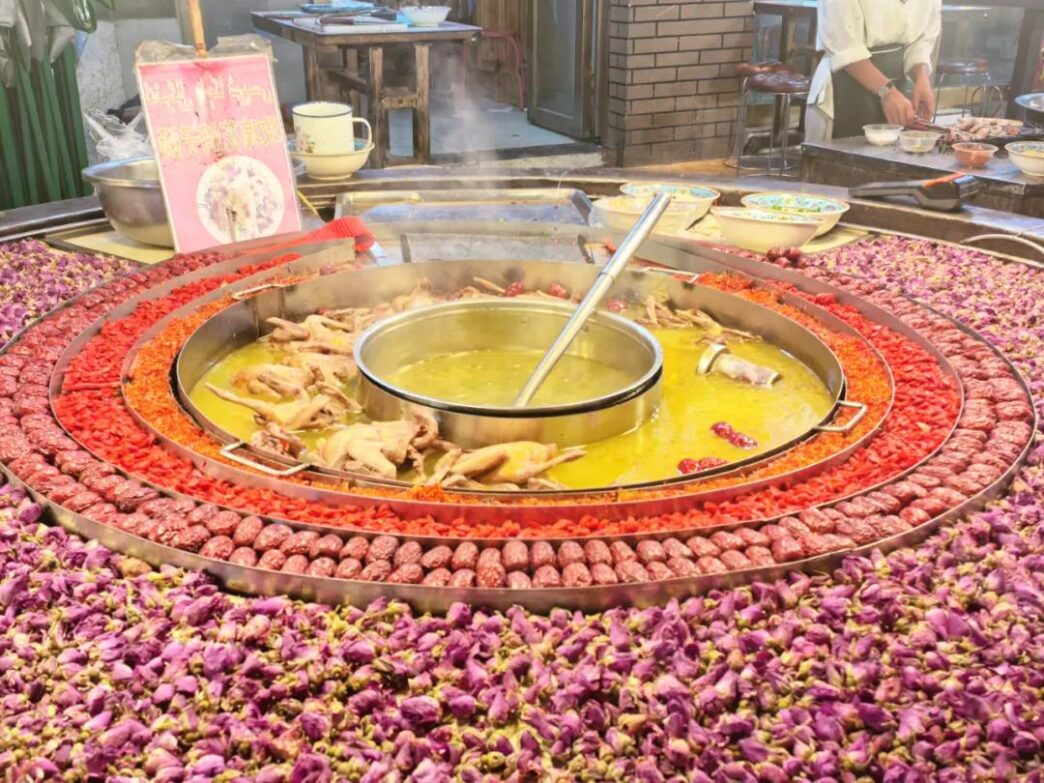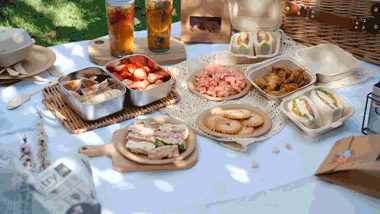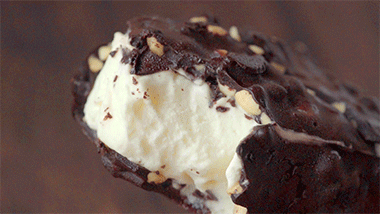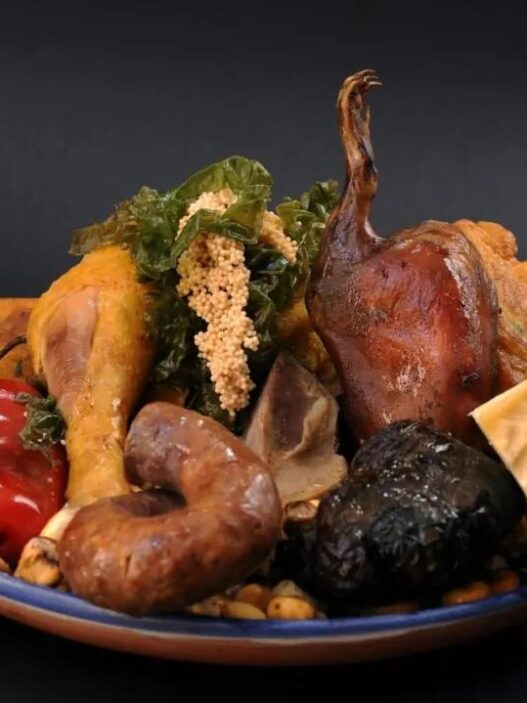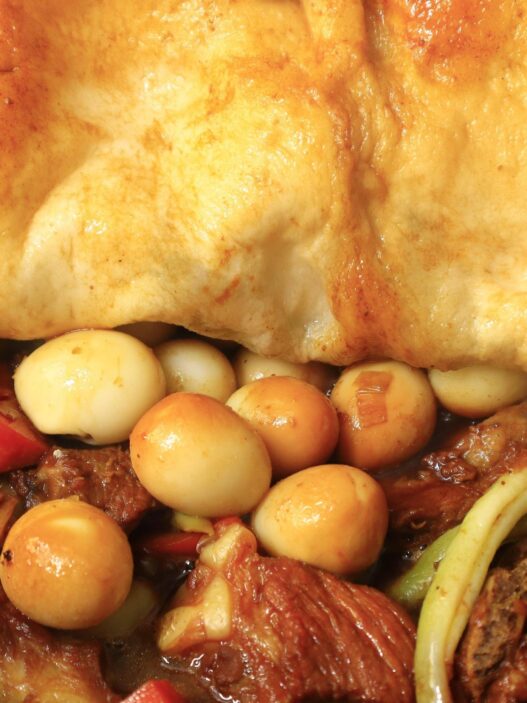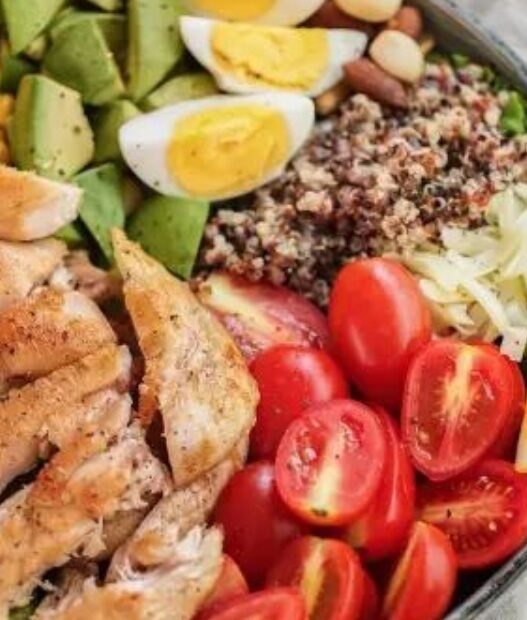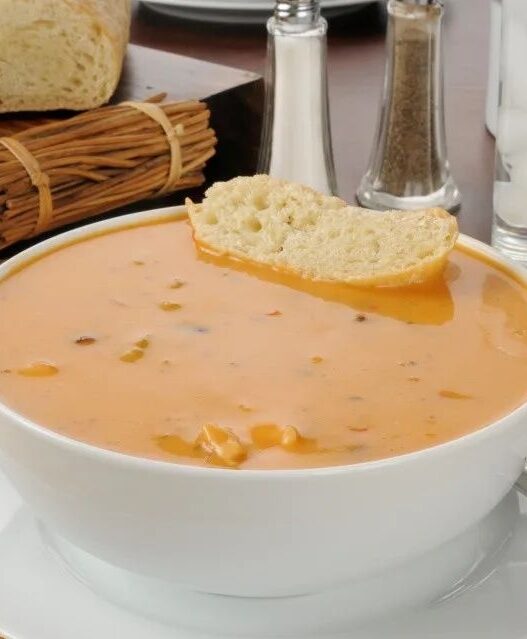If the food in Northern Xinjiang is all about “fusion,” then Southern Xinjiang, with Kashgar as its representative, is all about “authenticity.”
Kashgar, known as the encyclopedia of Xinjiang cuisine, deserves a visit where you should definitely bring along several stomachs!
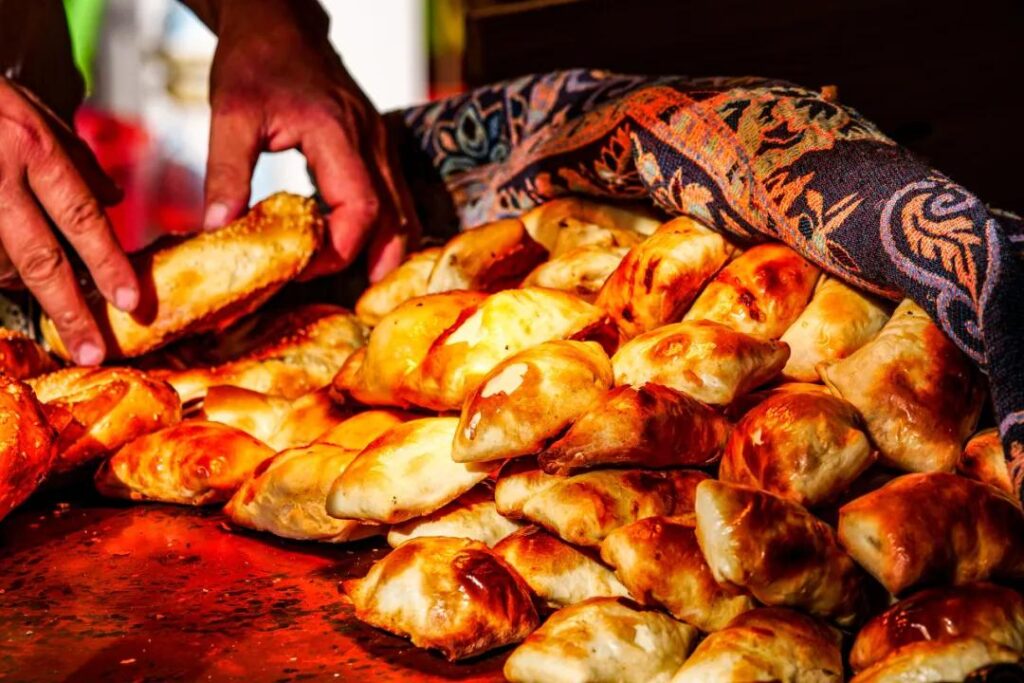
01
Meat, Meat, Meat of Southern Xinjiang Lamb, Chicken, Pigeon
In Xinjiang, lamb is graded, with Kashgar people describing the best quality as “meat from sheep that have never married.” And the red willow, known as the “Desert Warrior,” is the soul element of the Red Willow Kebab.
You must not miss the Red Willow Kebab; it’s the undisputed “Giant,” with a skewer that can be as long as your forearm, making it particularly satisfying to eat.
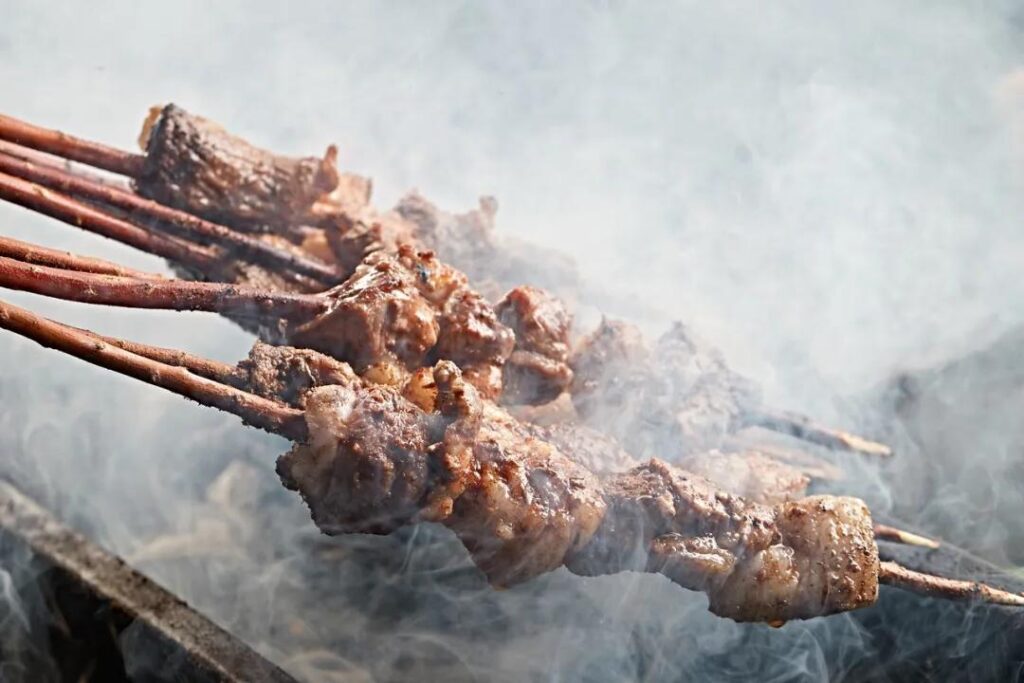
In Southern Xinjiang, there’s an advanced way of eating lamb known as “Jar Meat.”
Jar Meat is a refined, miniaturized version of clear-boiled lamb. Fresh, large chunks of lamb are placed into vintage enamel jars, with carrots, chickpeas, and other ingredients added, seasoned only with a touch of salt, resulting in a fresh, sweet taste without any gaminess.
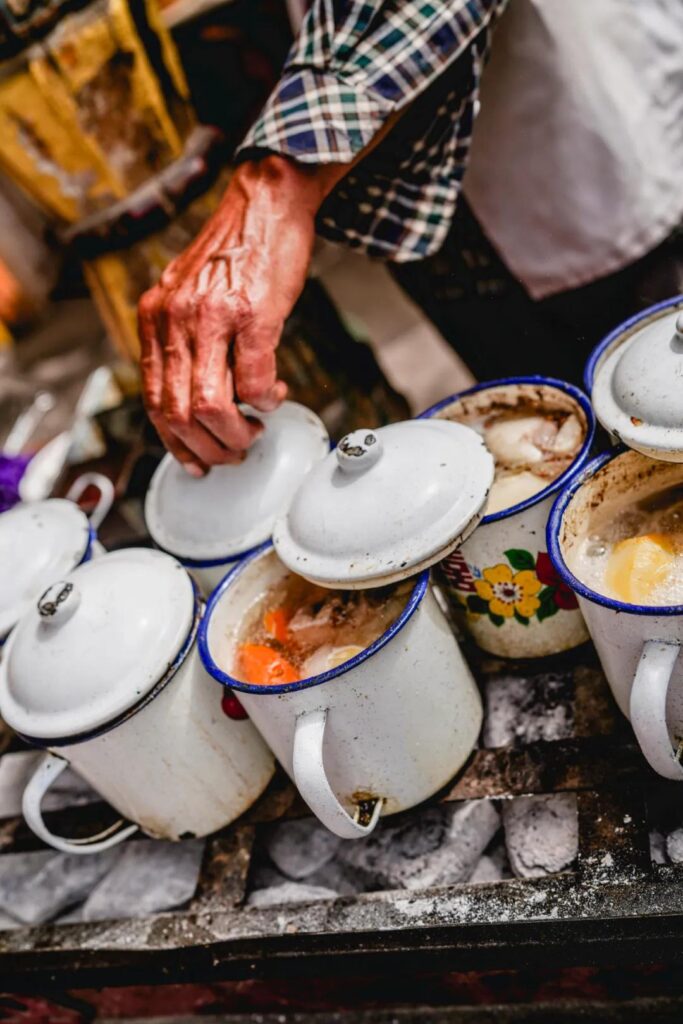
Xinjiang’s Big Plate Chicken and Pepper Chicken are already well-known, but today let’s talk about the lesser-known pigeon meat.
North of the north is Altay, and south of the south is Pigeon Soup. Shache is the place where pigeon is taken most seriously, with the saying, “No pigeon can fly out of Shache.” Pigeon is usually served with a bowl of original soup, one pigeon, and a small piece of naan. You start by drinking the soup, then dip the naan in it, and finally, eat the pigeon meat by hand.
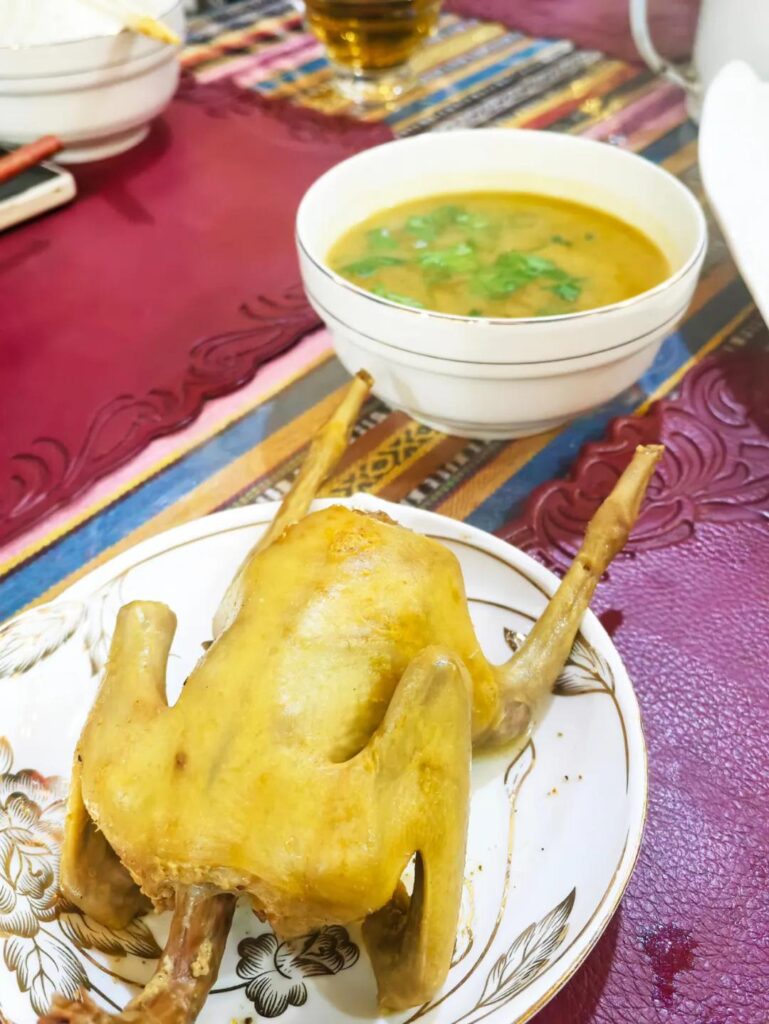
If there’s still room in your stomach, you can order another serving of Pigeon Soup Noodles. Pigeon meat mixed with noodles is also excellent, especially when paired with Chamaqu leaves and chickpeas.
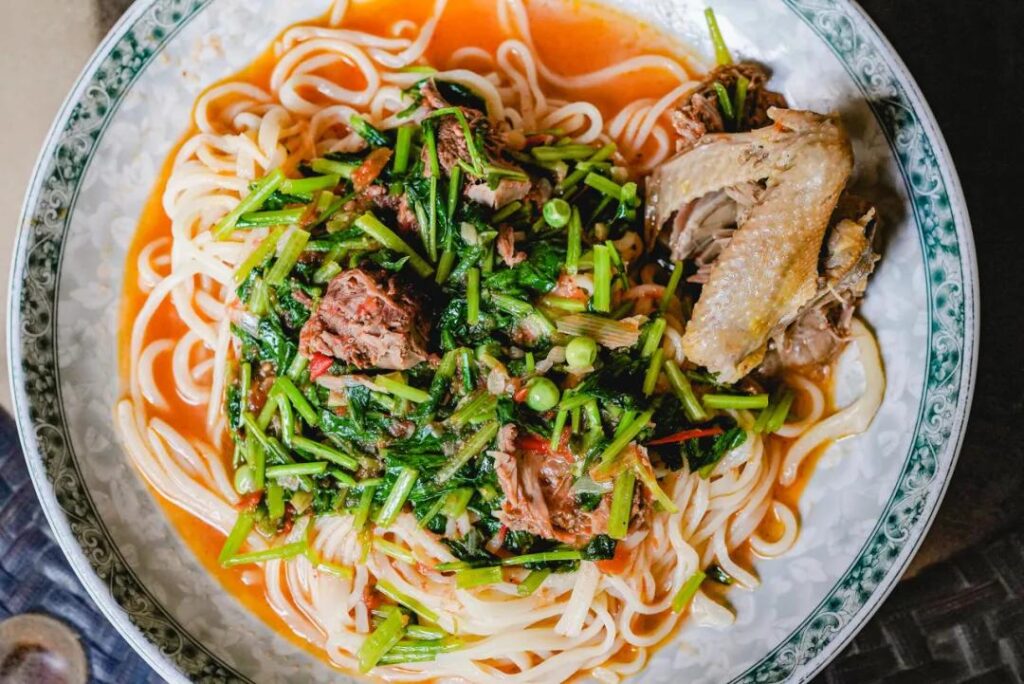
If none of these satisfy you, you can try Rose Pigeon Soup, served in a watermelon, there’s always a way to amaze your taste buds.
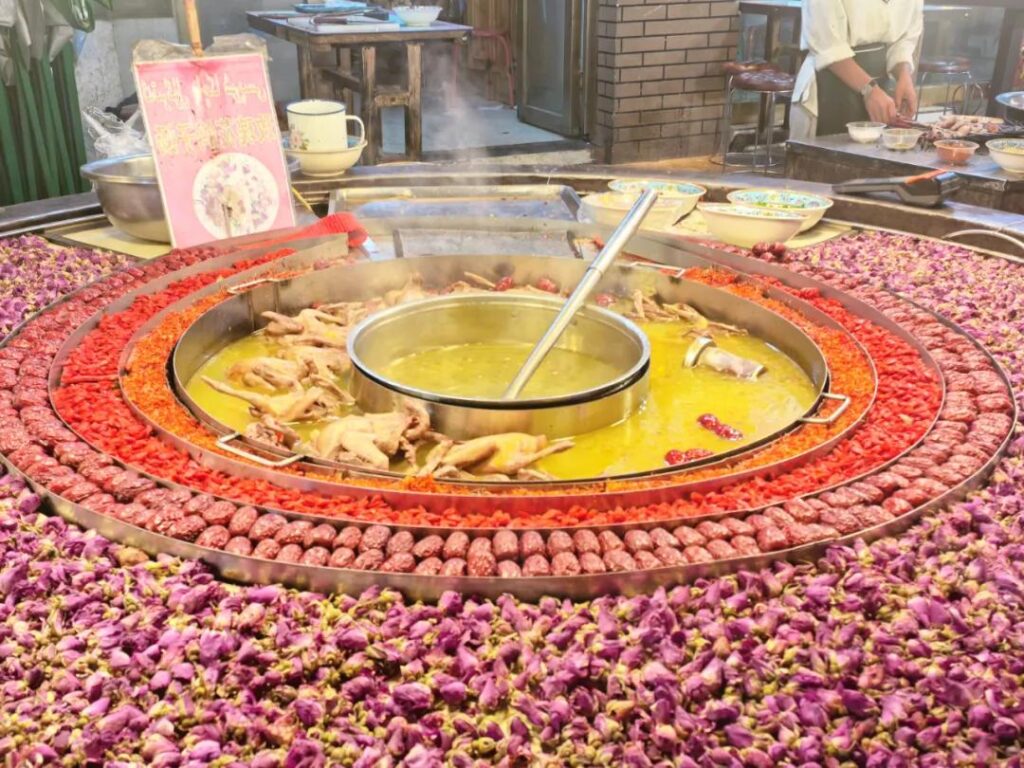
Apart from the feast of various meats, eating eggs in Southern Xinjiang is also an art. From small quail eggs to large ostrich eggs, including goose and chicken eggs… but the most popular are “nutritious eggs.”
A small hole is made in the top of the egg, the egg white is poured out, and then egg yolks from goose and quail eggs are added inside, baked over charcoal fire to dry out the moisture, essentially creating a three-yolk egg. Then it’s seasoned with salt, sugar, cumin, and chili powder, and you can even add honey and saffron. It has a soft-boiled egg texture, tasting sweet, spicy, and salty.
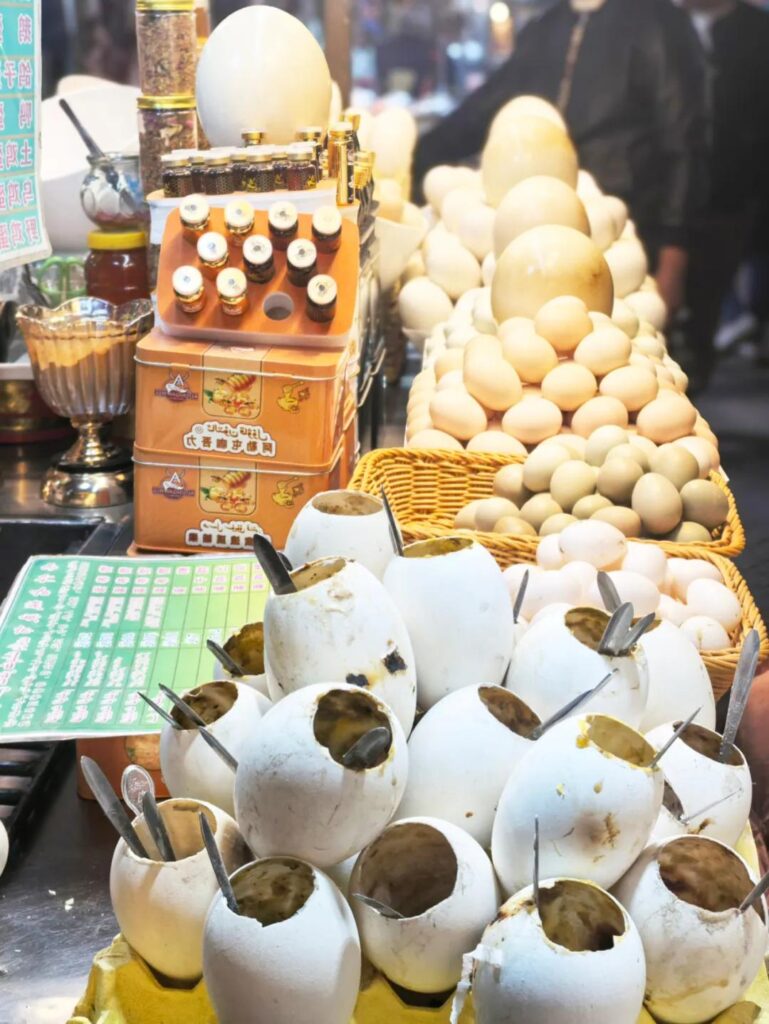
02
Carbohydrates of Southern Xinjiang / Pilaf, Baked Buns, Naan /
Kashgar’s pilaf, mainly lamb pilaf, features distinct grains of rice, tender and not greasy lamb, and a hint of sweetness from carrots and turnips.
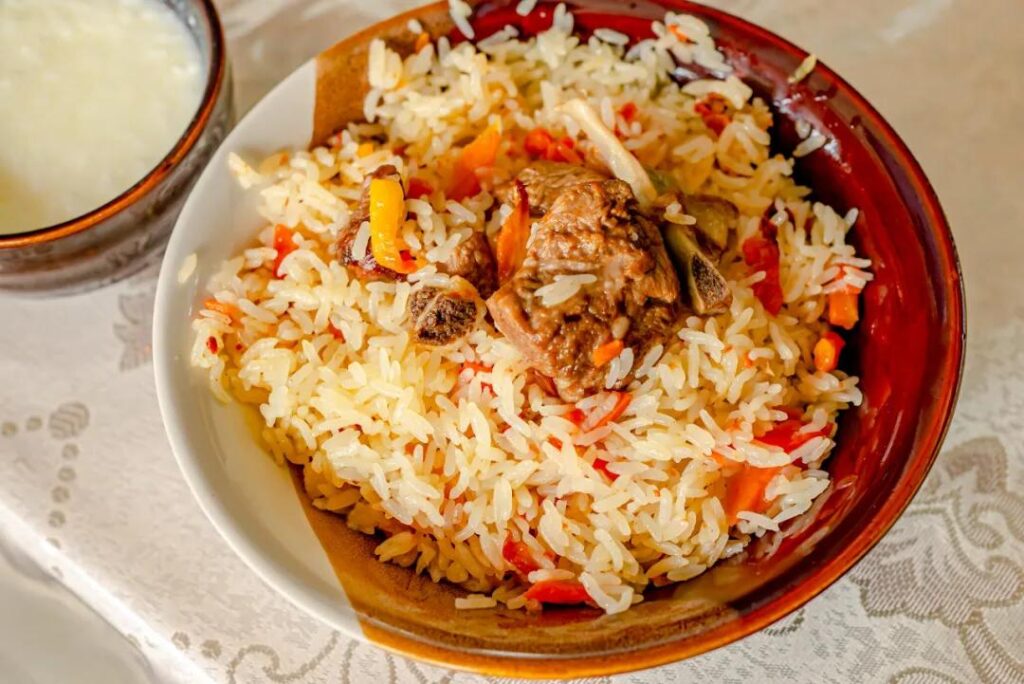
In the Handan Bazaar, you might even see a pot large enough to cook yourself, with rice and a big chunk of lamb rib being stir-fried inside.
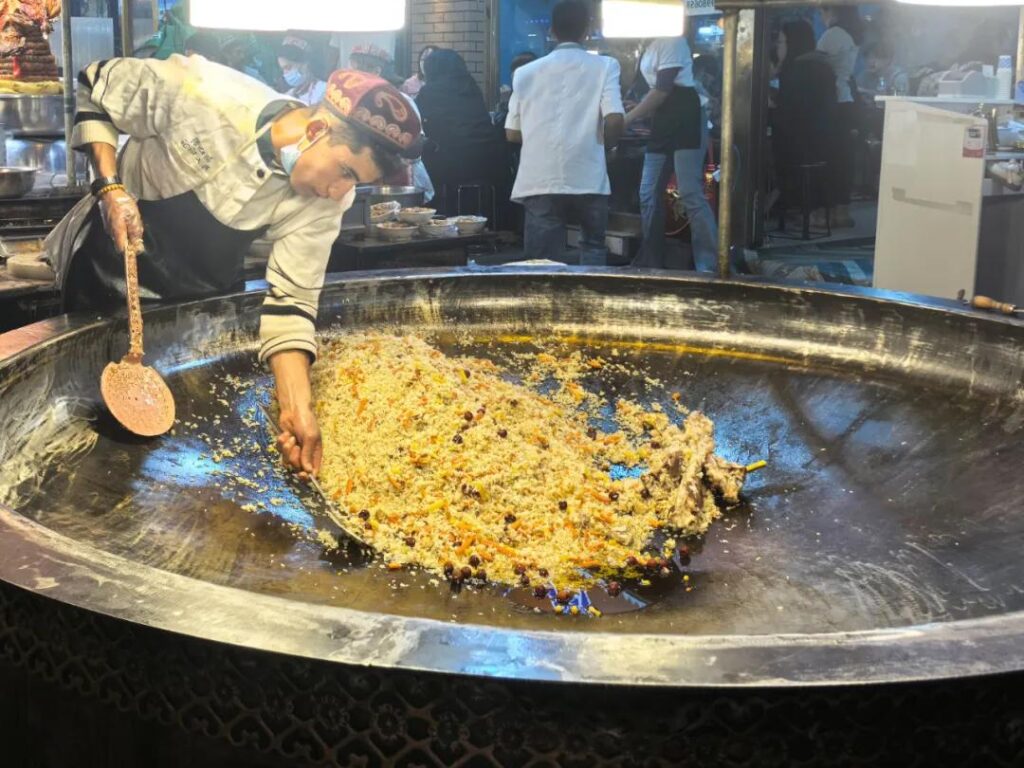
Xinjiang’s streets are dotted with small shops and stalls selling baked buns. The golden crust is crispy, the filling usually lamb, mixed with chickpeas, pepper, and salt, making it tender, juicy, not greasy, and not gamey. Remember, freshly baked buns are the most aromatic; you must eat them hot.
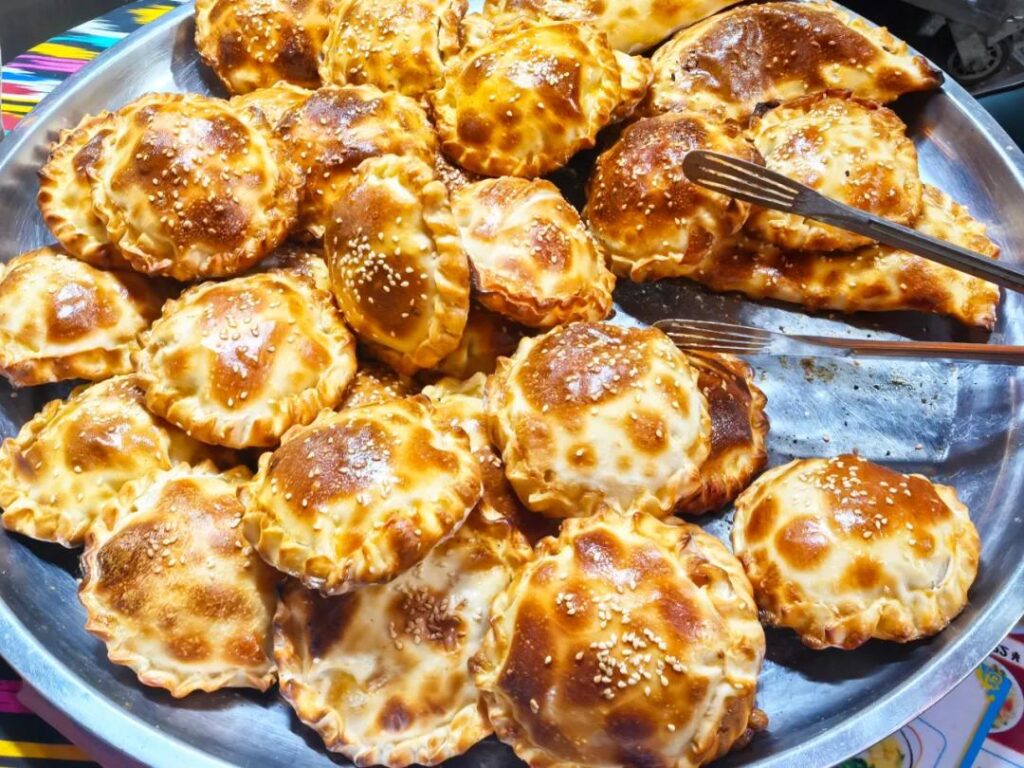
In addition to baked buns, there are thin-skinned steamed buns. After steaming, the dough becomes white and shiny, with skin as thin as paper, translucent and delicate. When eating, black pepper is often sprinkled on top to enhance the flavor and increase appetite.
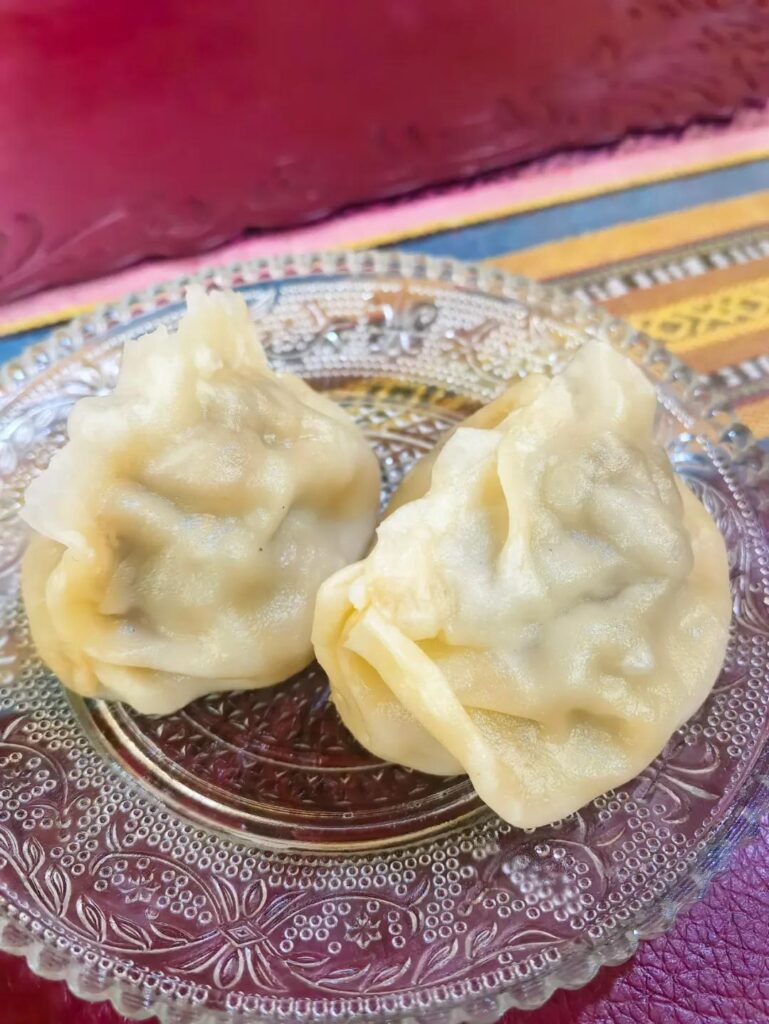
Lung and Rice Intestines are also specialties, a fusion of “offal + carbohydrates.”
To make Lung Intestines, sheep lungs are first cleaned, then filled with a batter, resulting in a soft, chewy texture. Making Rice Intestines involves chopping sheep liver, heart, and fat, mixing with rice, and stuffing it into sheep intestines.
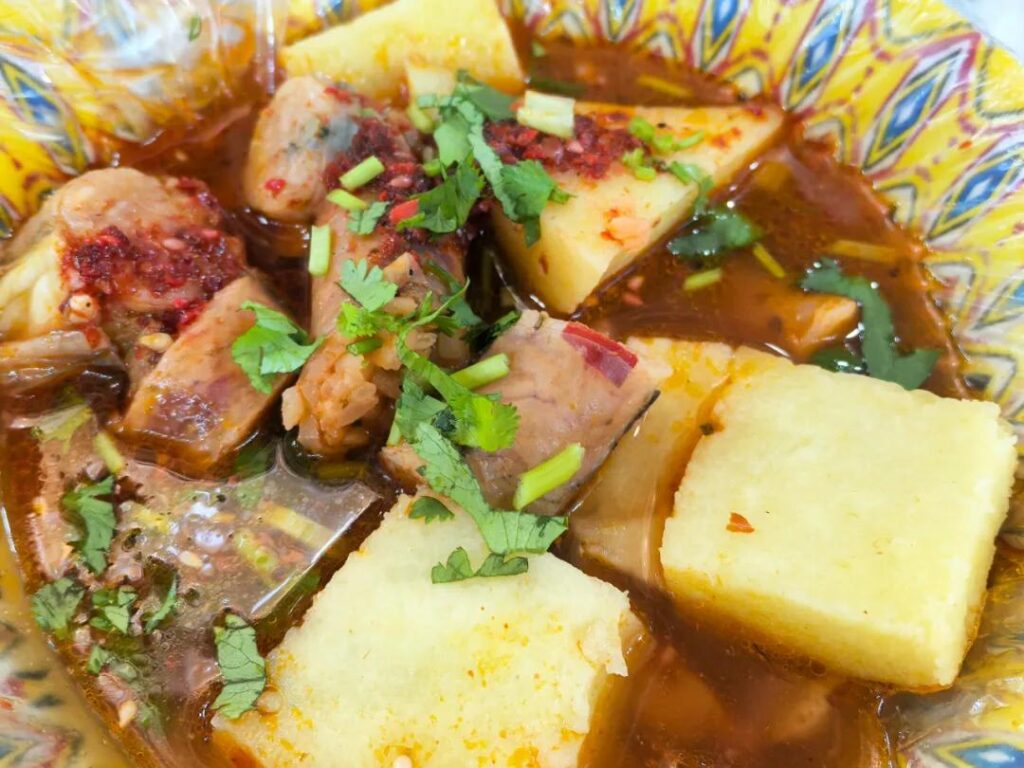
You’ll never imagine the variety of naan available in Southern Xinjiang until you visit. Thin, thick, larger than a basin, smaller than a palm, sweet, savory, with meat, or vegetarian… there’s a choice for everyone.
For those who love nuts, try sesame or walnut naan; for those with a sweet tooth, go for rose or raisin naan; the curious should try naan with chickpeas; if you like it crispy, try rye naan; and if you can’t handle food without spice, don’t miss out on chili naan… There’s even Mocha Coffee Naan and Latte Coffee Naan.
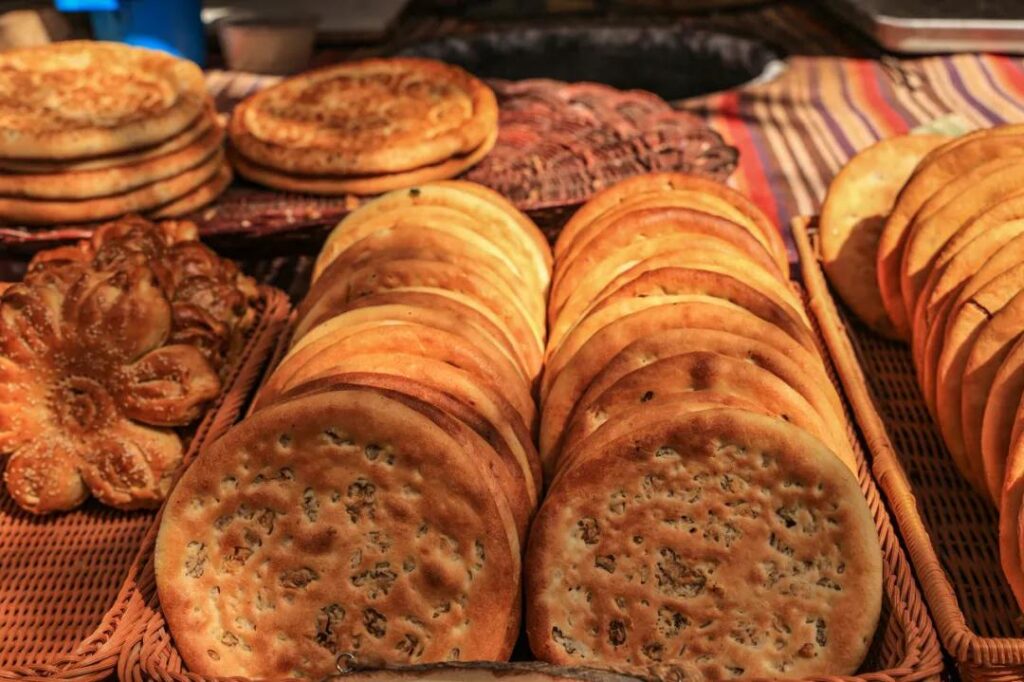
03
Sweet Delights of Southern Xinjiang / Snacks, Fruits, Dairy Products /
At the night market in Kashgar, you can buy a large piece of halva (locally known as Marzipan) for 5 RMB, which is sweet from dried fruits and crunchy with nuts, packed with flavor.
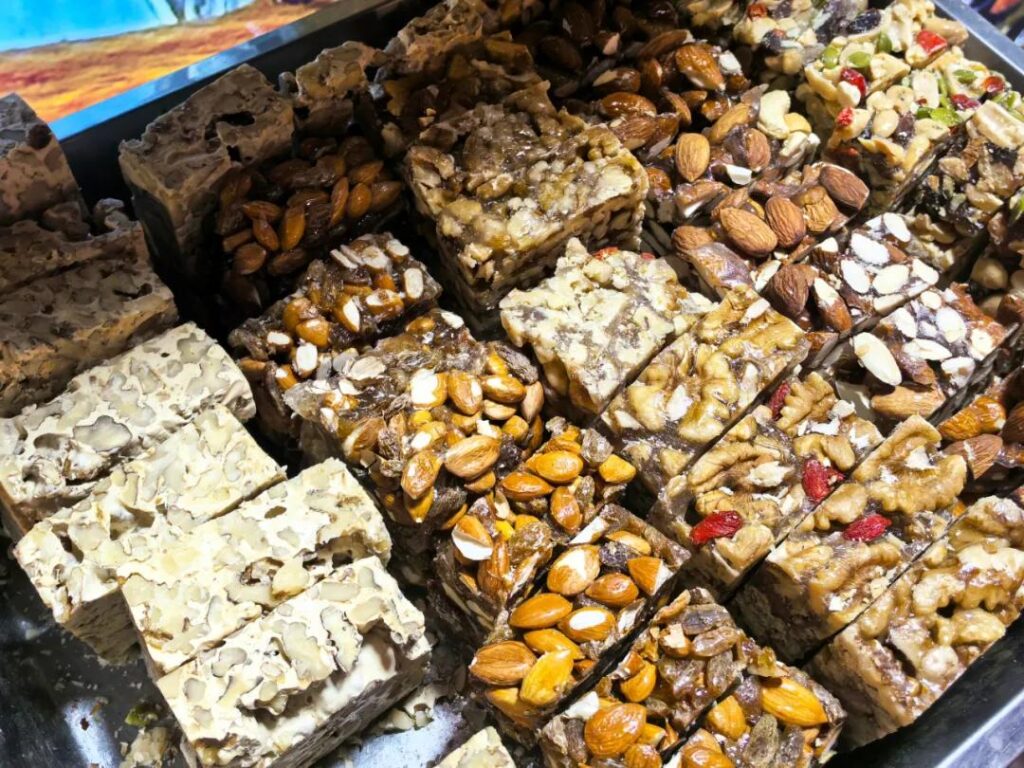
Besides halva, Kashgar’s sweets have their own style, with intricate designs and complex ingredients. Nut tarts, apricot jam cookies, cheese and nut wraps, cashew crisps… they’re more like stacked layers of dried fruits than just sweets, with walnuts and raisins stuffed in like they’re free.
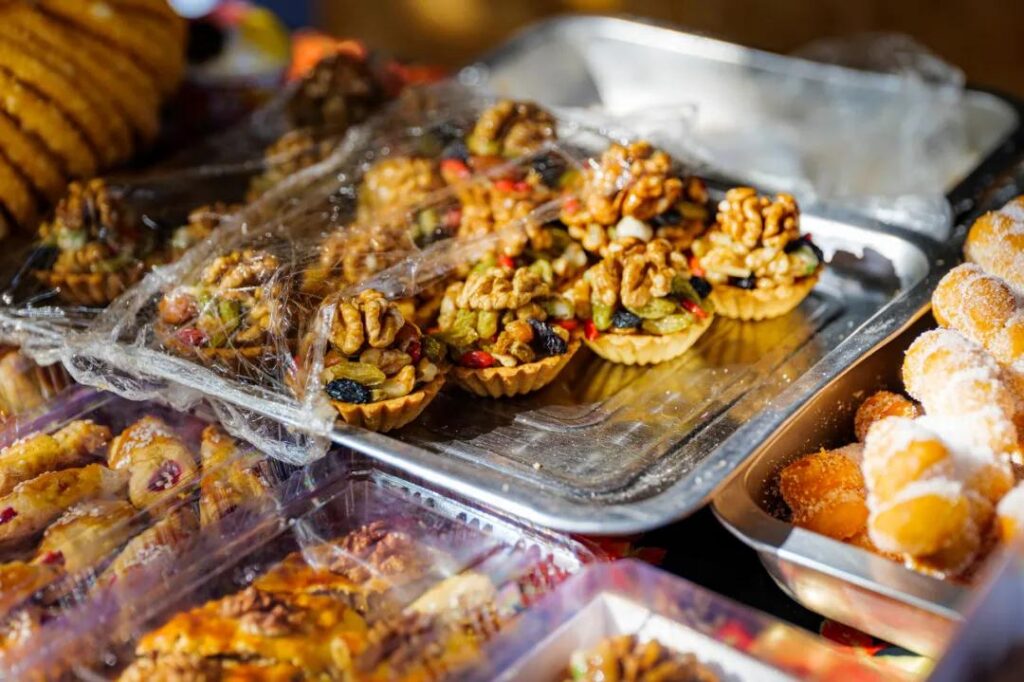
When it comes to eating fruit in Xinjiang, you don’t need to worry about whether it’s sweet; you only need to decide which sweetness you prefer. Apples from Aksu, fragrant pears from Korla, white mulberries, jujubes, small white apricots, melons, watermelons, grapes… and the most popular are figs.
Figs in Xinjiang are also known as “sugar buns,” and when eating them, they are placed between two leaves, flattened, and then consumed.
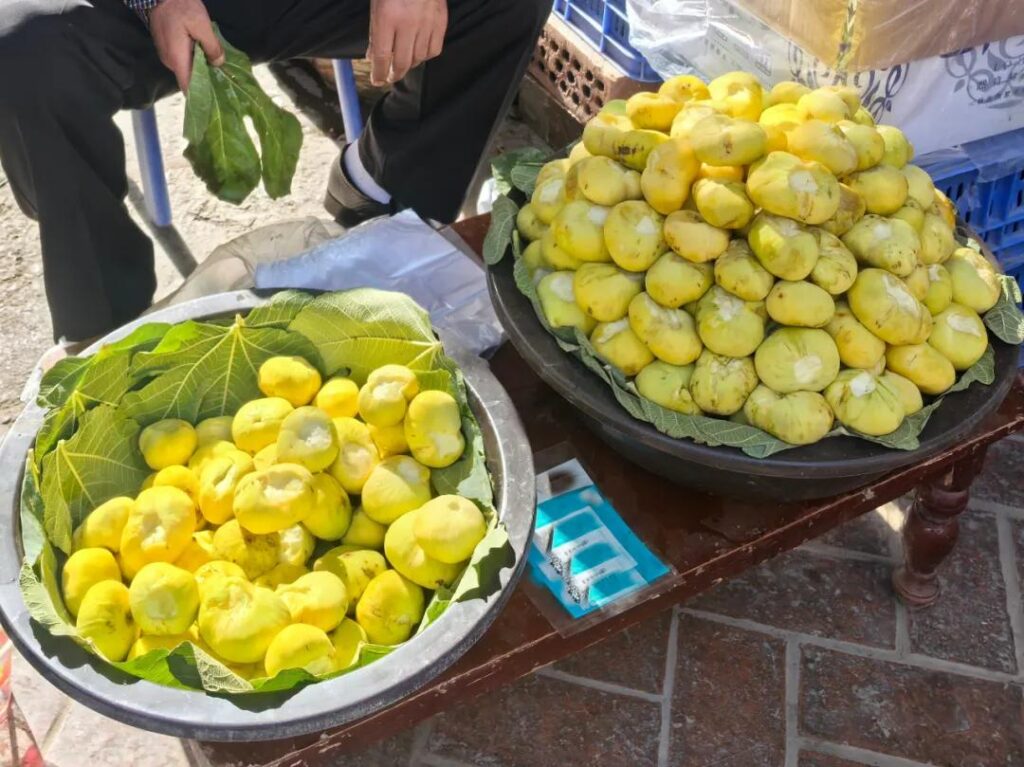
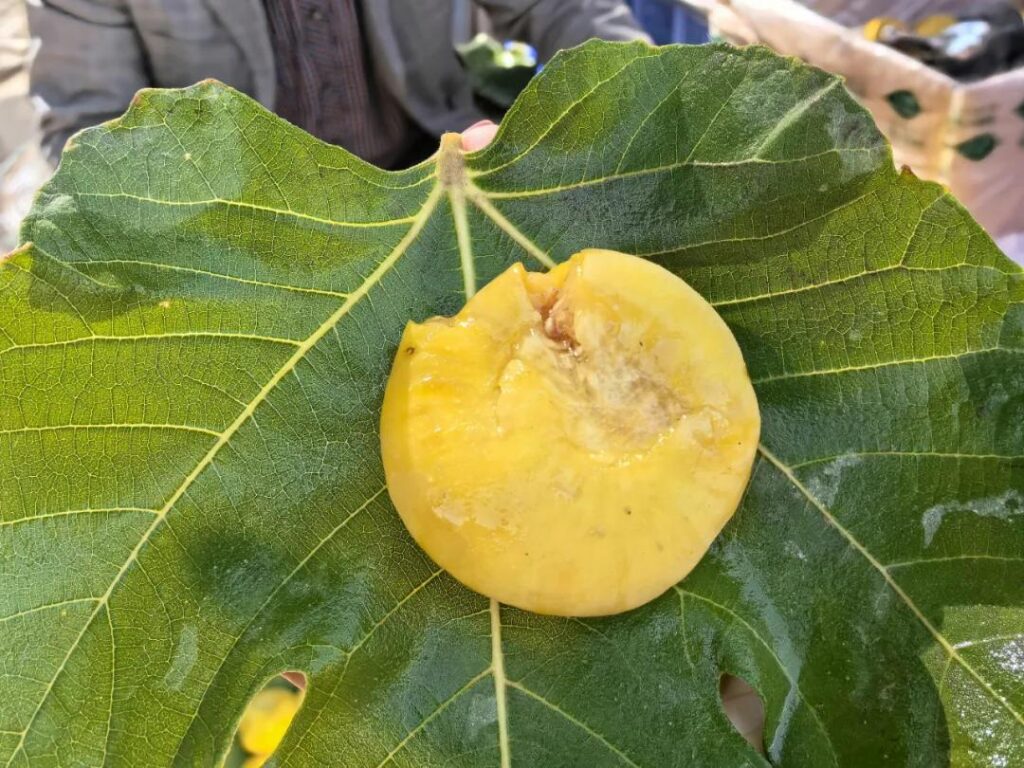
In Xinjiang, dairy products offer endless possibilities!
For 5 RMB, you can buy a super large bowl of yogurt from a street vendor, which is tangy and authentic. If you’re not used to the sourness, remember to add plenty of sugar. There’s also milk skin, yogurt donuts, yogurt rice dumplings, yogurt ice cream… all are exclusive treats you can’t easily find outside of Xinjiang.
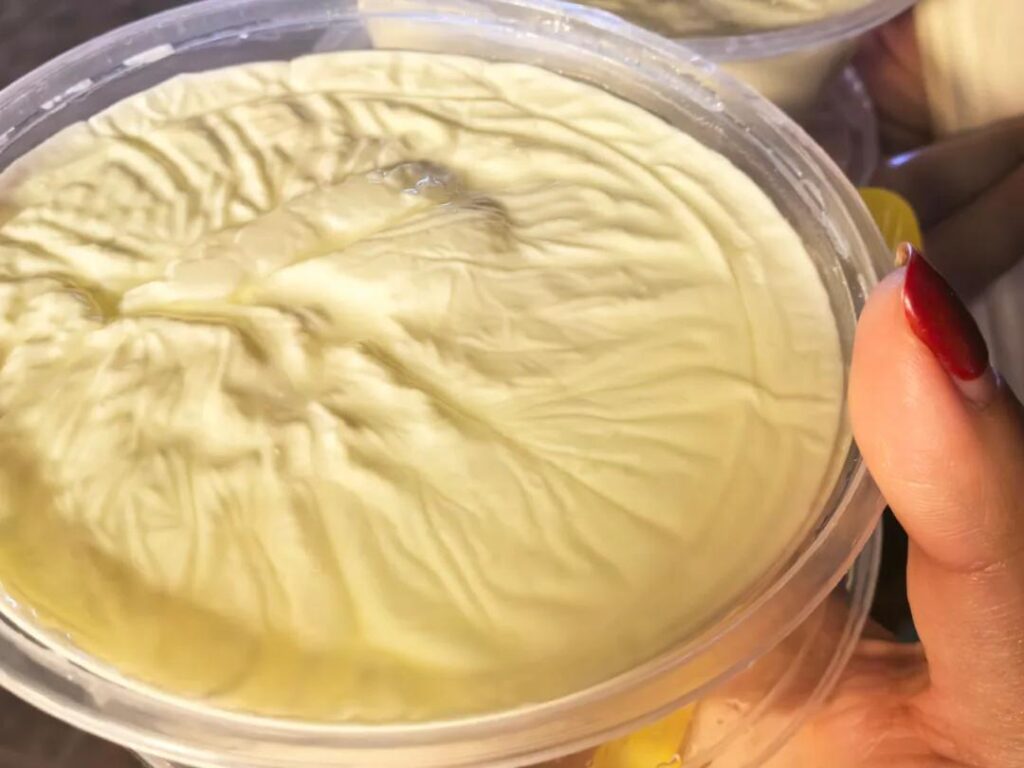
Milk skin, as the name suggests, is the layer of skin that forms on top of milk, available in dry and wet varieties, with larger pieces costing 5 RMB and smaller ones 3 RMB. There’s also baked milk skin, crispy and slightly sweet, not greasy. Yogurt donuts must be eaten fresh from the fryer, golden and soft, bursting with flavor when you take a bite!
Yogurt rice dumplings are a heavenly combination of yogurt, honey, and rice dumplings, and if you add a spoonful of fig jam, it’s pure bliss!
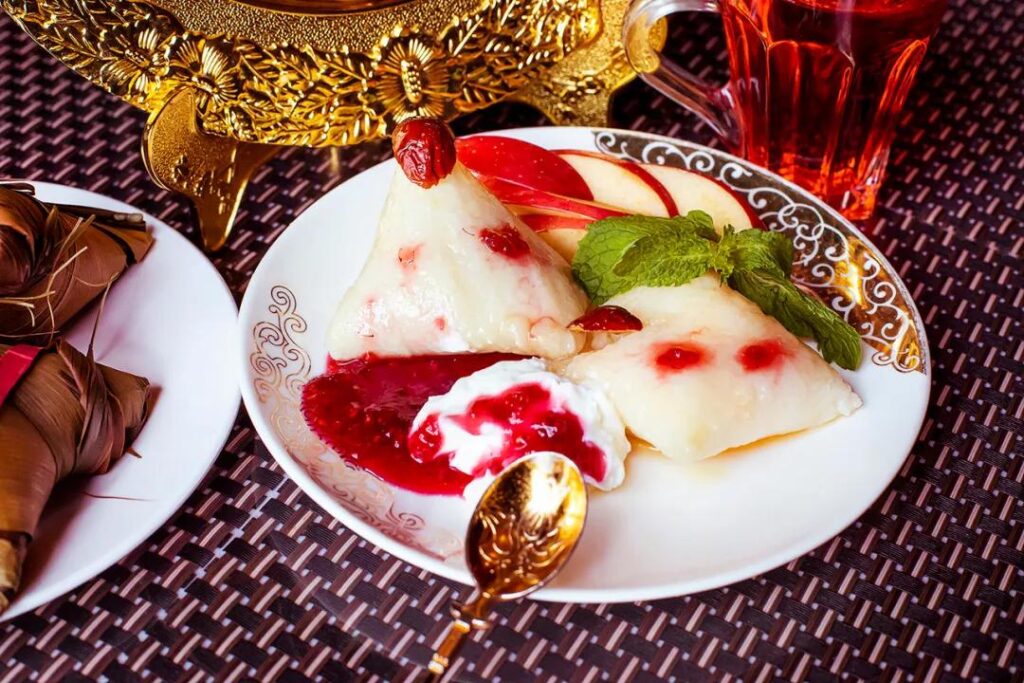
Many people’s verdict on Kashgar is “I thought I wouldn’t like the food before I came, but when I arrived, I realized I could never get enough.” After eating my way around, I can confirm: it’s true.







